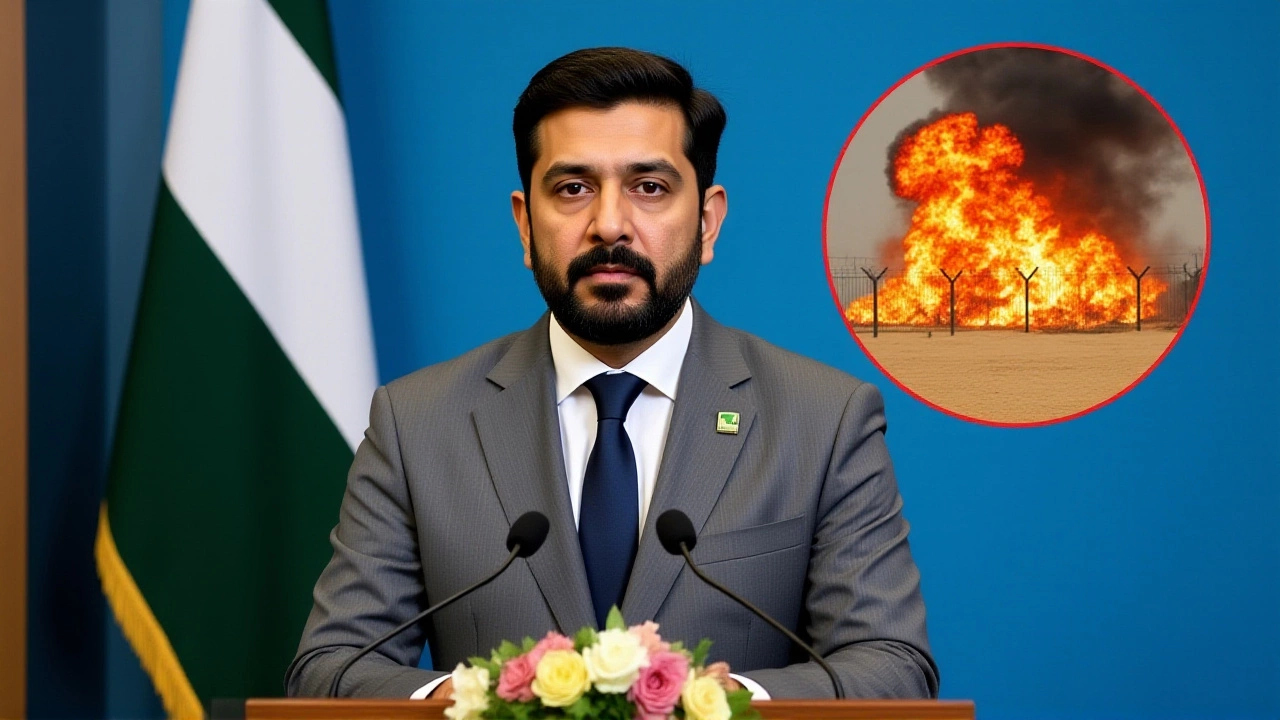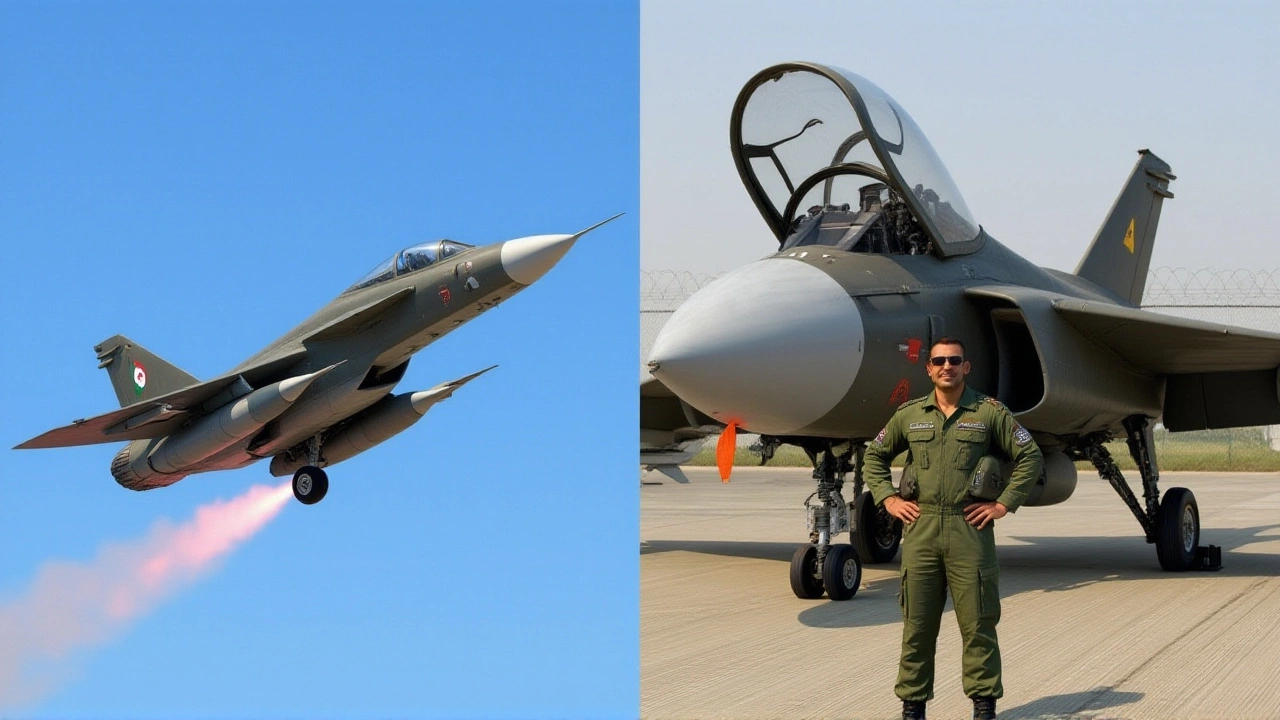On November 21, 2025, at 2:10 p.m. local time, a Hindustan Aeronautics Limited HAL Tejas fighter jet plummeted from the sky during a high-stakes aerial display at the Dubai Airshow 2025Al Maktoum International Airport in Dubai World Central. The crash killed Wing Commander Namansh Syal, the pilot, and marked the first fatal accident in the Tejas program’s 18-year operational history. Witnesses watched in stunned silence as the sleek, single-engine jet — designed to showcase India’s aerospace ambitions — suddenly lost control during a negative-G maneuver, nosedived at near-vertical speed, and erupted into a ball of black smoke. Spectators’ phones captured the horrifying final seconds, the footage now circulating globally as a grim reminder of the razor-thin margin between engineering triumph and tragedy.
The Final Maneuver
The crash occurred during a precision aerobatic sequence meant to highlight the Tejas’s agility. According to flight data reviewed by Indian Air Force investigators, the jet entered a low-altitude, high-speed negative-G roll — a maneuver that pushes the pilot downward against the seat, momentarily reducing G-force to zero. At 1,200 feet, the aircraft began to yaw violently. Radar tracking showed no engine failure, no warning lights, and no transmission from the pilot. Then, in less than three seconds, the jet flipped inverted and dove straight down. Impact was instantaneous. Fire engulfed the wreckage within seconds, sending a plume of thick, oily smoke visible across the airfield. Emergency crews rushed in, but there was no chance of survival.
What stunned aviation experts most wasn’t just the crash — it was the silence. The HAL Tejas is equipped with a Martin Baker Mark 16E ejection seat, widely regarded as one of the safest in the world. Designed for zero-zero capability (safe ejection at zero altitude and zero speed), it’s been used successfully in over 7,000 emergency cases globally. Yet, Syal never pulled the handle. "Why didn’t he eject?" became the burning question on every analyst’s lips. "It’s not just a technical failure," said retired Air Marshal Rajiv Mehra in a post-crash briefing. "It’s a human mystery. Either he was incapacitated — or he chose not to eject. And that’s the part we’re still trying to understand."
Who Was Wing Commander Namansh Syal?
Wing Commander Namansh Syal, 34, was a decorated pilot with over 1,200 flight hours, including 400 in the Tejas. A graduate of the National Defence Academy, he had flown combat exercises across the Indian Himalayas and was selected for the Dubai Airshow after a rigorous internal evaluation. His wife, Squadron Leader Priya Syal, also an Indian Air Force officer, was scheduled to attend the show. According to NDTV, she received the news while waiting in the VIP viewing area. She was escorted away in tears as the airfield fell silent.
Syal’s death is a profound loss for the IAF. He was one of only 18 pilots cleared to fly the Tejas in aerobatic displays. His colleagues described him as "calm under pressure," "meticulous," and "deeply proud of the aircraft." His final social media post — a photo of the Tejas on the tarmac with the caption "Proud to represent India on the world stage" — was shared over 800,000 times within 24 hours of the crash.
Why This Crash Matters
The HAL Tejas is India’s most important defense project of the last two decades. Developed by the Aeronautical Development Agency and manufactured by Hindustan Aeronautics Limited, it was meant to replace aging MiG-21s and reduce dependence on foreign fighters. Over 150 Tejas aircraft are now in service with the IAF and Indian Navy. Export deals with Argentina, Egypt, and the Philippines are in advanced talks. This crash, occurring on the global stage, threatens to derail momentum.
But it’s not just about exports. The Tejas has become a symbol of India’s technological self-reliance. "This aircraft was supposed to be the face of Make in India," said defense analyst Dr. Meera Nair. "Now, the world is watching to see if we can handle the truth — not just the triumphs."

What Happened Next?
Within 90 minutes of the crash, the Dubai Airshow 2025 suspended all flying demonstrations. The Indian government dispatched a 12-member technical team, including engineers from Hindustan Aeronautics Limited and IAF flight safety experts, to join UAE investigators. The UAE’s General Civil Aviation Authority (GCAA) confirmed it would lead the inquiry under international aviation protocols.
Initial findings, expected within 30 days, will focus on three areas: the ejection system’s functionality, potential software glitches in the fly-by-wire control system, and whether pilot workload during the maneuver exceeded human tolerance. The flight data recorder and cockpit voice recorder were recovered intact — a rare stroke of luck in such a violent crash.
Meanwhile, the IAF has grounded all Tejas aircraft assigned to airshow duty pending review. Training manuals are being revised. And for the first time, the Indian Air Force is publicly acknowledging the psychological toll of aerobatic flying. "We’ve trained pilots to push the envelope," said Air Chief Marshal V. R. Chaudhari. "But we’ve never fully trained them to recognize when the envelope is too thin."
History of Airshow Disasters
Tragedies at airshows are not new. In 2018, a Russian Su-30 crashed during a maneuver in Ukraine, killing the pilot. In 2020, a U.S. Navy F/A-18 Super Hornet went down at an airshow in California. In 2022, a Turkish F-16 crashed during a formation flight in Ankara. Each time, the cause was different — mechanical failure, pilot error, software lag. But the pattern is the same: high-risk maneuvers, tight margins, and the unspoken pressure to impress.
"Airshows aren’t about safety," said former RAF display pilot Tom Delaney. "They’re about showing what’s possible. And sometimes, what’s possible is also what’s deadly."

What’s Next for the Tejas Program?
Despite the tragedy, Indian defense officials remain publicly committed to the Tejas. The IAF plans to induct 83 more jets by 2030. Export negotiations continue. But behind closed doors, the crash has triggered a quiet but urgent review of flight envelope limits, ejection seat protocols, and pilot stress monitoring.
One potential change: future Tejas airshow displays may be flown at higher altitudes, reducing the margin for error. Another: mandatory biometric monitoring during aerobatic flights, tracking heart rate, G-force tolerance, and cognitive load in real time. The Indian Navy, which operates a naval variant of the Tejas, has already requested an independent safety audit.
"We don’t stop flying because of fear," said a senior IAF officer who spoke anonymously. "But we do stop flying recklessly. This crash isn’t the end of the Tejas. It’s the beginning of a more honest conversation about what it means to fly at the edge."
Frequently Asked Questions
Why didn’t Wing Commander Namansh Syal eject from the Tejas?
The Martin Baker Mark 16E ejection seat is designed to activate automatically if the aircraft exceeds critical parameters, but it also requires manual trigger. Investigators are examining whether Syal lost consciousness due to extreme G-forces, experienced a system delay, or — as some experts speculate — deliberately chose not to eject to avoid crashing into spectators. The cockpit voice recorder may hold answers, but the full truth may never be known.
Is the HAL Tejas safe to fly?
Yes — but context matters. The Tejas has flown over 15,000 sorties since 2007 with only three non-fatal incidents before this crash. Its safety record is better than many comparable fighters. However, this accident highlights risks during extreme aerobatics, which are not representative of normal combat operations. The IAF has grounded display aircraft, not frontline jets.
What impact will this have on Tejas export deals?
Export negotiations may slow temporarily, but not collapse. Countries like Argentina and Egypt have already invested heavily in the program. Defense buyers understand that accidents happen — even with top-tier aircraft. What matters now is how India responds: transparency, investigation, and fixes. If the IAF demonstrates rigorous accountability, demand is likely to continue.
How common are pilot fatalities during airshow performances?
Since 1989, over 40 military pilots have died during airshow performances worldwide. The most dangerous maneuvers — low-altitude rolls, high-G dives, and formation flying — account for 70% of these incidents. Airshows are inherently risky; they’re designed to push machines to their limits. The Dubai crash is the first involving a Tejas, but not the first time a nation has lost a pilot in front of the world.
Will the Dubai Airshow continue after the crash?
Yes. Ground displays, static exhibits, and business negotiations continued after the crash. But all flight demonstrations were canceled for the remainder of the show, which ended on November 21. Organizers issued a statement honoring Syal and pledged to review safety protocols for future editions, including mandatory minimum display altitudes for fighter jets.
What’s being done to prevent future crashes like this?
The Indian Air Force is implementing real-time biometric monitoring for pilots during high-G maneuvers, revising aerobatic flight manuals to include stricter G-force thresholds, and introducing mandatory simulator training for extreme scenarios. Additionally, the HAL Tejas’s flight control software is undergoing a full audit, with updates expected by mid-2026. The goal isn’t to make the jet safer — it’s to make the human-machine partnership more resilient.
